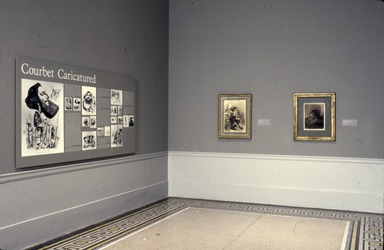

Courbet Reconsidered, November 04, 1988 through January 16, 1989 (Image: PSC_E1988i102.jpg Brooklyn Museum photograph, 1988)

Courbet Reconsidered, November 04, 1988 through January 16, 1989 (Image: PSC_E1988i103.jpg Brooklyn Museum photograph, 1988)
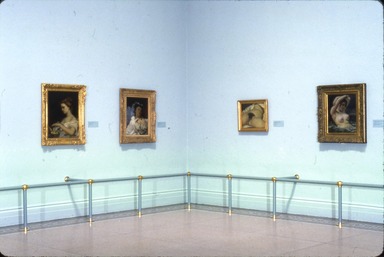
Courbet Reconsidered, November 04, 1988 through January 16, 1989 (Image: PSC_E1988i104.jpg Brooklyn Museum photograph, 1988)
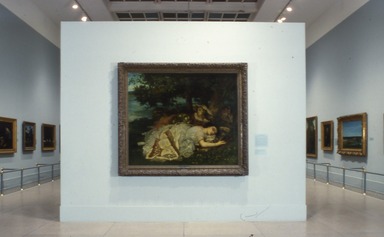
Courbet Reconsidered, November 04, 1988 through January 16, 1989 (Image: PSC_E1988i105.jpg Brooklyn Museum photograph, 1988)

Courbet Reconsidered, November 04, 1988 through January 16, 1989 (Image: PSC_E1988i106.jpg Brooklyn Museum photograph, 1988)

Courbet Reconsidered, November 04, 1988 through January 16, 1989 (Image: PSC_E1988i107.jpg Brooklyn Museum photograph, 1988)
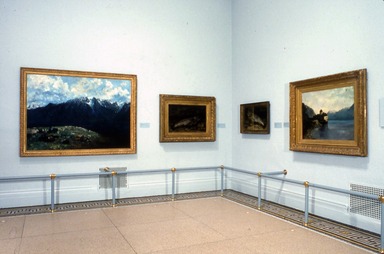
Courbet Reconsidered, November 04, 1988 through January 16, 1989 (Image: PSC_E1988i108.jpg Brooklyn Museum photograph, 1988)
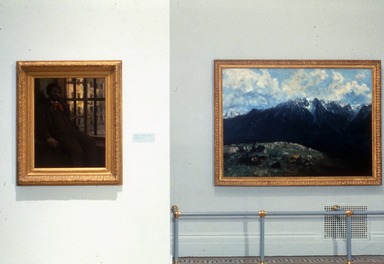
Courbet Reconsidered, November 04, 1988 through January 16, 1989 (Image: PSC_E1988i109.jpg Brooklyn Museum photograph, 1988)

Courbet Reconsidered, November 04, 1988 through January 16, 1989 (Image: PSC_E1988i110.jpg Brooklyn Museum photograph, 1988)

Courbet Reconsidered, November 04, 1988 through January 16, 1989 (Image: PSC_E1988i111.jpg Brooklyn Museum photograph, 1988)
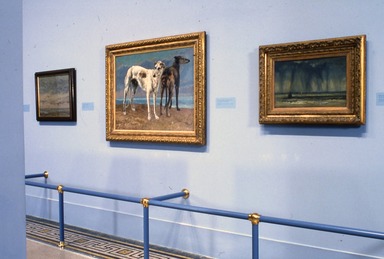
Courbet Reconsidered, November 04, 1988 through January 16, 1989 (Image: PSC_E1988i112.jpg Brooklyn Museum photograph, 1988)
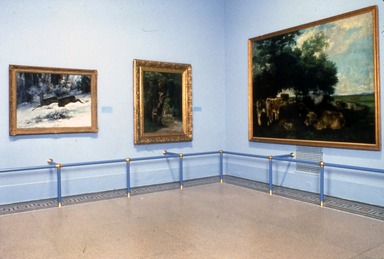
Courbet Reconsidered, November 04, 1988 through January 16, 1989 (Image: PSC_E1988i113.jpg Brooklyn Museum photograph, 1988)
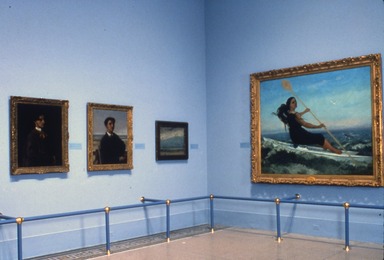
Courbet Reconsidered, November 04, 1988 through January 16, 1989 (Image: PSC_E1988i114.jpg Brooklyn Museum photograph, 1988)
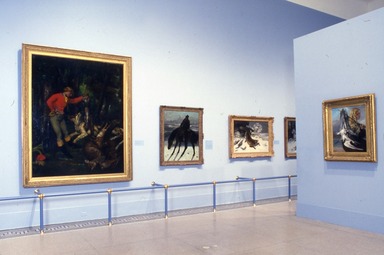
Courbet Reconsidered, November 04, 1988 through January 16, 1989 (Image: PSC_E1988i115.jpg Brooklyn Museum photograph, 1988)

Courbet Reconsidered, November 04, 1988 through January 16, 1989 (Image: PSC_E1988i116.jpg Brooklyn Museum photograph, 1988)
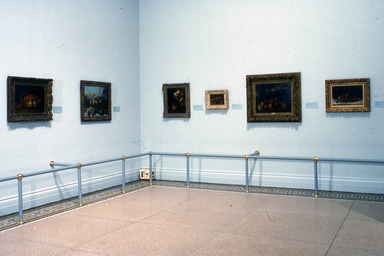
Courbet Reconsidered, November 04, 1988 through January 16, 1989 (Image: PSC_E1988i117.jpg Brooklyn Museum photograph, 1988)
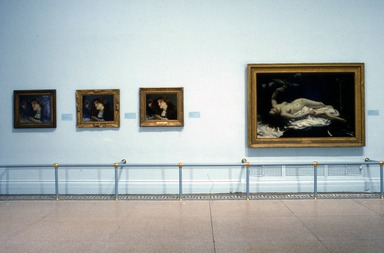
Courbet Reconsidered, November 04, 1988 through January 16, 1989 (Image: PSC_E1988i118.jpg Brooklyn Museum photograph, 1988)

Courbet Reconsidered, November 04, 1988 through January 16, 1989 (Image: PSC_E1988i119.jpg Brooklyn Museum photograph, 1988)
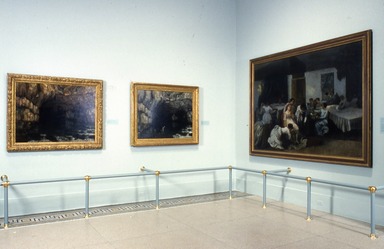
Courbet Reconsidered, November 04, 1988 through January 16, 1989 (Image: PSC_E1988i120.jpg Brooklyn Museum photograph, 1988)
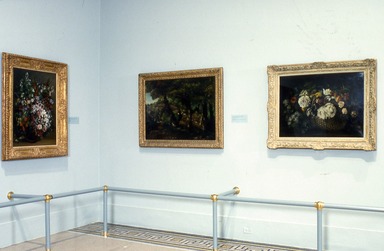
Courbet Reconsidered, November 04, 1988 through January 16, 1989 (Image: PSC_E1988i121.jpg Brooklyn Museum photograph, 1988)

Courbet Reconsidered, November 04, 1988 through January 16, 1989 (Image: PSC_E1988i122.jpg Brooklyn Museum photograph, 1988)
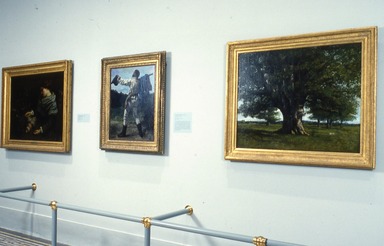
Courbet Reconsidered, November 04, 1988 through January 16, 1989 (Image: PSC_E1988i123.jpg Brooklyn Museum photograph, 1988)
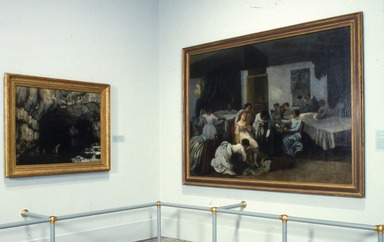
Courbet Reconsidered, November 04, 1988 through January 16, 1989 (Image: PSC_E1988i124.jpg Brooklyn Museum photograph, 1988)
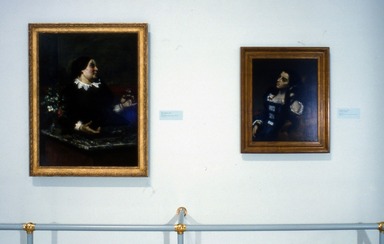
Courbet Reconsidered, November 04, 1988 through January 16, 1989 (Image: PSC_E1988i125.jpg Brooklyn Museum photograph, 1988)

Courbet Reconsidered, November 04, 1988 through January 16, 1989 (Image: PSC_E1988i126.jpg Brooklyn Museum photograph, 1988)

Courbet Reconsidered, November 04, 1988 through January 16, 1989 (Image: PSC_E1988i127.jpg Brooklyn Museum photograph, 1988)
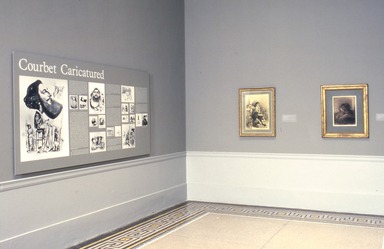
Courbet Reconsidered, November 04, 1988 through January 16, 1989 (Image: PSC_E1988i128.jpg Brooklyn Museum photograph, 1988)

Courbet Reconsidered, November 04, 1988 through January 16, 1989 (Image: PSC_E1988i129.jpg Brooklyn Museum photograph, 1988)
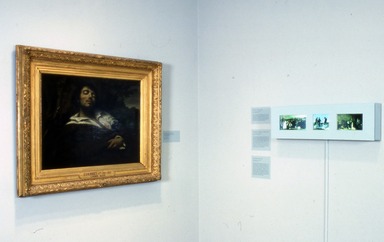
Courbet Reconsidered, November 04, 1988 through January 16, 1989 (Image: PSC_E1988i130.jpg Brooklyn Museum photograph, 1988)

Courbet Reconsidered, November 04, 1988 through January 16, 1989 (Image: PSC_E1988i131.jpg Brooklyn Museum photograph, 1988)
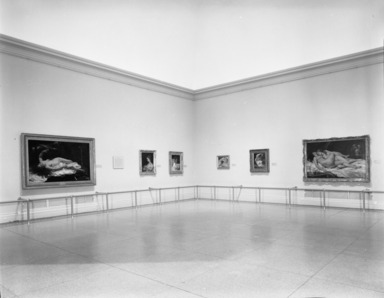
Courbet Reconsidered, November 04, 1988 through January 16, 1989 (Image: PSC_E1988i139_bw_SL5.jpg Brooklyn Museum photograph, 1988)

Courbet Reconsidered, November 04, 1988 through January 16, 1989 (Image: PSC_E1988i140_bw_SL5.jpg Brooklyn Museum photograph, 1988)
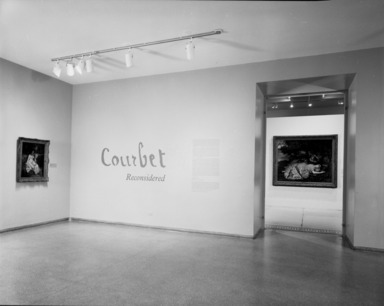
Courbet Reconsidered, November 04, 1988 through January 16, 1989 (Image: PSC_E1988i141_bw_SL5.jpg Brooklyn Museum photograph, 1988)
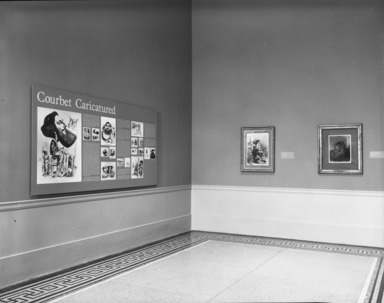
Courbet Reconsidered, November 04, 1988 through January 16, 1989 (Image: PSC_E1988i142_bw_SL5.jpg Brooklyn Museum photograph, 1988)
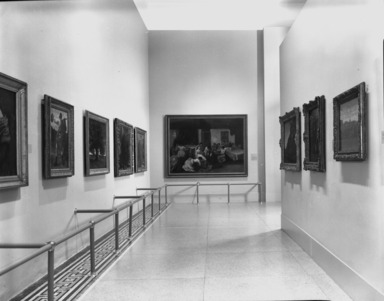
Courbet Reconsidered, November 04, 1988 through January 16, 1989 (Image: PSC_E1988i143_bw_SL5.jpg Brooklyn Museum photograph, 1988)

Courbet Reconsidered, November 04, 1988 through January 16, 1989 (Image: PSC_E1988i144_SL5.jpg Brooklyn Museum photograph, 1988)

Courbet Reconsidered, November 04, 1988 through January 16, 1989 (Image: PSC_E1988i145_SL5.jpg Brooklyn Museum photograph, 1988)
Courbet Reconsidered
-
May 1, 1988
EXHIBITION:
Courbet Reconsidered
PRESS PREVIEW:
Tuesday, November 1, 1988, from 5:00 to 7:00 P.M.
EXHIBITION DATES:
November 4, 1988 - January 16, 1989
ITINERARY:
After the exhibition closes at The Brooklyn Museum, it will travel to the Minneapolis Institute of Arts (February 23 - April 30, 1989).
SPONSOR:
The exhibition is made possible by a grant from the IBM Corporation, with additional support from the National Endowment for the Arts, and an indemnity from the Federal Council for the Arts and the Humanities.
CONTENTS:
A major exhibition comprising 87 paintings and 12 drawings by Gustave Courbet (1819-1877), the French painter whose radical challenge to the esthetic of the Academy and its underlying authoritarian assumptions was crucial to the birth of modernism. The artist’s break with the conventions of rhetorical painting is explored through the themes that preoccupied him and arose from his own experience: self-presentation; family and local provincial community as subjects for high art; the rugged landscape of the artist’s native province; the hunt; female imagery and the nude; the seacoast; the still life as document of psychic release or anguish. Major works include The Young Ladies on the Banks of the Seine, which has never been shown in the United States before, The Sleepers, The Sleeping Spinner, The Trellis, The Source of the Loue, and The Young Ladies of the Village.
PURPOSE:
A retrospective of the artist’s work has not been seen in the United States since 1959-60, nearly 30 years ago. (The important 1977 centenary exhibition at the Louvre and the Royal Academy, London, did not travel to this country.) In recent years the growing interest in 19th century studies and the development of new perspectives on the context of early modernism have prompted a re-examination of the major figures of the period. Greater public attention has been given to the Impressionists, but the emergence of Impressionism cannot be fully understood without a knowledge of Courbet’s art, his position in relation to the Academic establishment of his day, and the ideas embodied in his work.
LENDERS:
Works will be borrowed from nearly 60 public and private collections in the United States, Canada, Europe and Japan. Major collections participating are The Metropolitan Museum of Art, the Musée d'Orsay and the Petit Palais in Paris, the Philadelphia Museum of Art, the Musée Fabre in Montpellier, the Nationalmuseum in Stockholm, the Art Institute of Chicago, the Toledo Museum of Art, and the Musée Beaux-Arts in Besançon, France. Other public institutions include the National Gallery, Washington, and the Cleveland Museum of Art.
ORGANIZATION:
The exhibition has been selected and organized by Sarah Faunce, Curator of European Paintings and Chair of the Painting and Sculpture Department at The Brooklyn Museum, with Linda Nochlin, Distinguished Professor of Art History at the Graduate Center of the City University of New York.
CATALOGUE:
Essays by Sarah Faunce and Linda Nochlin together with Michael Fried, Petra Chu, Douglas Edelson, and Claudette Mainzer. Each work will be reproduced in color, with accompanying texts by Ann Dumas, Abigail Solomon-Godeau, and Rae Becker. The catalogue is produced and distributed by Yale University Press.
POSTER:
Accompanying the exhibition, a poster reproducing Courbet’s Trellis, 1862, will be available at The Museum Shop.
SYMPOSIUM:
A symposium is scheduled for November 18 and 19, at which papers will be given on issues arising from the nature and role of realism in the Second Empire.
ACCOMPANYING EXHIBITIONS:
In conjunction with Courbet Reconsidered The Brooklyn Museum will organize an exhibition of 19th-century French works on paper from the Department of Prints and Drawings and the Department of Paintings which will be shown in the Prints and Drawings Galleries. In addition, selections from the Museum’s collection of 19th-century French paintings will be the subject of a Curator’s Choice exhibition.
Brooklyn Museum Archives. Records of the Department of Public Information. Press releases, 1971 - 1988. 1988, 059-61.
View Original -
October 1, 1988
1819
Born June 10 in Ornans near Besançon in the Franche-Comté. Son of Régis, prosperous farmer from Flagey, and Sylvie, née Oudot. Grandson of Jean-Antoine Oudot, a veteran of the Revolution. Brother of Zoë, Zélie, and Juliette.
1831-37
Day pupil at school in Ornans. Began lifelong friendship with Max Buchon, who would become a noted regional poet and political dissident. Discovered art as a pupil of “père Baud,” a former student of Baron Gros who began teaching in Ornans in 1833.
1837-39
Student at Collège Royal in Besançon; after unhappy first term gained permission to live outside college and study art with a painter called Fajoulet, former student of David.
1839-43
Arrived in Paris late in 1839 and began to study despite his father’s wish that he should study law. Attended the studio of Steuben, but worked mostly by copying in the museums, especially Flemish, Dutch, Venetian, and Spanish painting. Began sending paintings to the Salon in 1841. Established pattern of spending part of each year in Ornans.
1844-45
Self-Portrait with Black Dog accepted at the Salon of 1844. Works refused in 1845 included the Hammock and the Portrait of Juliette.
1846-47
Trips to Holland and to Belgium confirmed admiration for Northern painting.
1848
February revolution opens Salon, enabling Courbet to show ten paintings, including the Cellist. Friendship with Baudelaire and with Champfleury, who becomes a critical supporter. Together with Buchon, Murger, and others they form a group at the Brasserie Andler that wins it the name “temple of Realism.” In August, death of Grandfather Oudot.
1856
Summer visit with Clement Laurier in Berry. Invited in the autumn to Ghent, he travels also to Brussels, Antwerp, Bruges, Ostend, and he returns to Ornans via Liege, Cologne, and the Rhine to Mainz, Strasbourg, and Besançon.
1857
Salon rules changed to establish a jury of members of the Academy and to require open entry only to members of the Institute or recipients of the Legion d’Honneur. Courbet’s submission includes new subjects: the hunt (The Quarry and Deer Trapped in the Snow) and a major figure painting drawn from Parisian life, The Young Ladies on the Banks of the Seine, which provokes critical attack. Summer visit to Montpellier with Champfleury; stays with Frangois Sabatier as well as Bruyas. In August, travel to Belgium, where he stays nearly a year.
1858-59
Invited to Frankfurt, where his German hosts provide him with a studio and introduce him to stag hunting on a grand scale. Paints the Lady of Frankfurt and the Hunt Breakfast and begins work on the Battle of the Stags and the Stag at Water, but does not show at the Salon of 1859.
1860-61
Visit of young critic Jules-Antoine Castagnary to Courbet’s studio begins a friendship lasting to the artist’s death, and a loyalty to his reputation that continued beyond. Shows five paintings at Salon of 1861, of which four are scenes of the hunt, well received by the critics. Director of Beaux-Arts recommends State purchase of the Battle of the Stags, and rumor spreads that Courbet might receive the Légion d’Honneur, enabling him to submit freely to Salon. Both purchase and decoration turned down by the emperor. Growing requests to show in exhibitions in Antwerp, Brussels, Lyon, Metz, Nantes, where he is awarded medals. Late in 1861 opens school for young painters dissatisfied with the École, but in an open letter of December 26 outlines reasons why it is impossible to teach painting. School lasts two months.
1849
Settled in the rue Hautefeuille, on the left bank near the Pont St. Michel. Beginning of friendship with Francis Wey. Eleven works shown at artist-juried Salon. After Dinner at Ornans, the first of his ambitious paintings of Ornans subjects, is bought by the state, and Courbet is awarded a medal, permitting open entry to Salon.
1850-51
Winter and spring spent painting at Ornans. Completed Stonebreakers, Peasants of Flagey, and A Burial at Ornans, which were shown with six other works at the Salon that opened December 30, 1850. (The Burial was first shown at Besançon and Dijon.) Immense critical outcry, directed especially at the Burial. Travels to Brussels and Munich on invitation from artists of these cities.
1852
Political tension following the December 1851 coup d’etat; Courbet believes he is under surveillance, Buchon flees to Switzerland. The Young Ladies of the Village, with two other works, shown at Salon. Though already bought by the comte de Morny, the Young Ladies is attacked.
1853
Salon entries are the Bathers, the Wrestlers, and the Sleeping Spinner (the Bathers causing shock even to admirers). Alfred Bruyas, philosophical young collector from Montpellier, buys the Bathers and the Sleeping Spinner, commissions a portrait of himself, and begins a relationship of great importance to Courbet.
1854
Man with a Pipe bought by Bruyas. Courbet stays with him at Montpellier from May through September. Paints portraits, coastal subjects, and the Meeting. After return to Ornans, work begun on the Painter’s Studio.
1855
Preparation for the Exposition Universelle and for Courbet’s own exhibition on a building constructed near the exposition and called Pavilion du Réalisme. Eleven works shown at the exposition, including the Grain Sifters, the Meeting, and A Spanish Lady. Forty paintings at the Pavilion, including A Burial at Ornans and the Painter’s Studio, which had been refused at the Exposition. Pavilion less successful in terms of visitors and sales than Courbet had hoped.
1868-69
Two paintings at Salon, a Hunt and the Beggar’s Alms. Castagnary reports a rumor that Courbet will have a seat in the Institute, which Courbet refutes. Landscapes at Ornans and at Maizières, staying with Castagnary at home of Dr. Ordinaire, an amateur painter. Showed L’Hallali and the Rest During Harvest Season at Salon. Visits Etretat, painting seascapes, including the large Stormy Sea and the Cliff at Etretat After the Storm. Trip to Munich, warm reception by young artists, and royal recognition. Death of Buchon at end of year brings on depression.
1870
Large Etretat paintings shown at Salon. Nominated for Légion d’Honneur in June; refused on grounds of his principled opposition to imperial government. Refusal gains him applause of friends and increased suspicion of government. Outbreak of war with Prussia ends in defeat of Empire, proclamation of Republic on September 4. Courbet serves Government of National Defense as President of Arts Commission, charged with protection of artworks in Paris and environs against destruction of war. Calls for dismantling of Vendôme column as imperial symbol; publishes open letter to the German army and German artists, calling for an end to the war and fraternity between peoples.
1871-72
Formation of Commune in March. Courbet head of Federation of Artists, plans liberalization of art institutions as well as protection of artworks. April 16, elected representative from sixth arrondissement. Meanwhile, Commune government had arranged for toppling--not dismantling--of column, which took place May 16. Commune defeated late May; Courbet arrested June 7. Imprisoned, tried, and sentenced to fine and six month prison term. Enters Ste.-Pélagie prison in September; is transferred to clinic in Neuilly for operation and recuperation. Begins to paint fruit still lifes. Paintings sent to Salon refused on political grounds.
1862-63
Etienne Baudry, patron and friend of Castagnary from Saintes, invites Courbet to stay at his property, Rochemont. Courbet thrives on environment and companionship of Baudry and friends, stays in the Saintonge at different locations until April 1863. Paints landscapes, portraits and a new theme, flowers. At Saintes in January, shows forty-eight canvases, forty-three of them done in the Saintonge. Saves for submission to Salon the Return from the Conference, an anticlerical satire intended to retaliate for the insult received from the emperor in 1861. The Return refused not only for regular Salon but for Salon des Refuses. Courbet opens his studio for public viewing and enjoys rebutting the critical attack on the Return.
1864-65
Painting of two female nudes, Venus and Psyche, refused at Salon on grounds of indecency. Shown in Brussels later that year. Most of year spent in Ornans, painting landscapes, including series of Puits Noir and Source of the Loue. Death of Proudhon in January 1865. At Salon Courbet shows Portrait of P.-J. Proudhon in 1853. Fall 1865 spent in Trouville, painting portraits and seascapes. Whistler also in Trouville; his mistress is subject of Courbet’s Jo.
1866
Growing demand for pictures by private collectors. Sent to Salon are Woman with a Parrot and the Gathering of the Deer, both given place of honor. Expected purchase of Woman with a Parrot falls through, resulting in lengthy controversy with Director of Beaux-Arts. Fall trip to Deauville, staying with patron, the comte de Choiseul. Painted seascapes, enjoys companionship of Boudin and Monet. The Sleepers commissioned by noted collector Khalil Bey. The Quarry bought by Allston Club in Boston, first painting to go to United States. Participates in shows in Lille, Amsterdam, Brussels, The Hague.
1867
Winter in Ornans, concentrating on landscapes of snow and hunting themes. Shows only four earlier paintings at the Exposition Universelle. Concentrates on preparing a second one-man show, held at the Rond-Point de l’Alma: Manet’s exhibition was around the corner. Shows 115 paintings, many borrowed from collectors. L’Hallali, the Rest During the Harvest Season, and recent snow paintings shown for the first time. Courbet hopes to make gallery permanent, to include Bruyas collection as well, but Bruyas prefers to remain in Montpellier.
1873-77
Government votes for reconstruction of Vendôme column, with expenses paid by Courbet; property is threatened. In late July he leaves Ornans for Switzerland, accompanied by Dr. Ordinaire and a woman friend. Settles in La Tour-de-Peilz, near Vevey. Though warmly received by Swiss friends and visited by Castagnary, Baudry, and others, he suffers from the exile: drinks too much, permits collaborators on some paintings; grows increasingly ill. May 1876, final judgment to pay for reconstruction of column destroys hopes for return to France. Dies December 31, 1877.
Brooklyn Museum Archives. Records of the Department of Public Information. Press releases, 1971 - 1988. 1988, 089-94.
View Original -
September 1, 1988
The first retrospective exhibition of the work of the 19th-century French painter Gustave Courbet (1819-1877) to be held in the United States in nearly 30 years opens at The Brooklyn Museum November 4, 1988. Entitled Courbet Reconsidered, the exhibition includes 85 paintings and 12 drawings on loan from over 50 public and private collections in the United States, Canada, Europe, and Japan. It will remain on view in the Museum’s East End Galleries, located on the fifth floor, through January 16, 1989.
The exhibition has been organized by The Brooklyn Museum and is made possible by a grant from the IBM Corporation, with additional support from the National Endowment for the Arts, and L’Association Française d’Action Artistique, Ministère des Affaires Etrangères, Secretariat d’ Etat aux Relations Culturelles Internationales. The exhibition received an indemnity from the Federal Council on the Arts and Humanities. After it closes at The Brooklyn Museum, the exhibition will travel to the Minneapolis Institute of Arts, February 19 through April 30, 1989.
Courbet Reconsidered is under the patronage of His Excellency the Minister of Culture, Communications, Major Works and Bicentennial, M. Jack Lang; His Excellency the Ambassador of France, M. Emmanuel de Margerie; and the Deputy-Mayor of Montpellier, M. Georges Frêche.
The exhibition documents Courbet’s career and illustrates through his works the artist’s radical challenge to the aesthetics of the French Academy and its underlying idealist doctrine that prescribed a style and imagery drawn from ancient art and historical and biblical narrative. Courbet’s break with the conventions of rhetorical painting is explored through the themes that preoccupied him and arose from his own experience: family and local provincial community as subjects for high art; the rugged landscape of the artist’s native province; the hunt; female imagery and the nude; portraits and self-portraits; the seacoast; and the still life as document of psychic release or anguish.
The son of a prosperous farmer, Gustave Courbet was born on June 10, 1819, in Ornans, a small town in the east of France near Switzerland. In 1839, he moved to Paris to become a painter. As a painter, Courbet was largely self-taught. He did not enroll in the École des Beaux-Arts in Paris, which provided students with instruction in the Neoclassical style of painting, but learned primarily from copying the paintings of earlier masters.
Courbet came to artistic maturity at a time when the painting of everyday life - known as genre painting and traditionally considered a minor art form - was drawing the attention of the most radical and innovative artists. Emerging in the wake of the Revolution of 1848, which established the Second Republic and temporarily opened up the restrictive Salon system, these artists were called “Realists,” because they took as their subjects the specific regional landscapes of France and the life of the ordinary people who inhabited them. These subjects were in contrast to those considered serious and important by the Academic establishment: themes drawn from Classical antiquity, biblical history, or the history of France.
During the early 1850s, Courbet painted a number of major works in which he gave to themes of genre painting the weight and significance of traditional history painting. Most notable among these in the exhibition are The Young Ladies of the Village, The Sleeping Spinner, Dressing the Dead Girl, and The Young Ladies on the Banks of the Seine. The last painting, from the Petit Palais in Paris, will be shown for the first time in the United States. Another painting, The Origin of the World, was long thought to be lost and will be shown in public for the first time. The exhibition will also provide the first opportunity to bring together the four versions Courbet painted of Jo, the Beautiful Irish Girl.
The artist’s political ideals led him to participate in the Commune of Paris of 1871, which attempted to radically restructure society. After three months the movement was repressed and the surviving Communards were jailed. Courbet was sentenced to six months in prison, although illness allowed him to complete his sentence in a clinic. While he was in the clinic he painted still-life paintings of fruits that are considered allegories of a return to life by the artist.
From 1873 to his death in 1877 at the age of fifty-eight, Courbet lived in Switzerland, unable to return to his native land. A vengeful government had charged him with the entire cost of reconstructing the Vendôme column, an imperial symbol torn down by the Communards. Courbet’s return would have meant imprisonment and confiscation of his works by the state. Of the themes drawn from his surroundings in Switzerland, two were paramount: the mountains, alone or looming behind the lake - the barrier to France; and the Château de Chillon, an ancient fortress and prison.
The exhibition has been selected and organized by Sarah Faunce, Curator of European Paintings and Chair of the Painting and Sculpture Department at The Brooklyn Museum, with Linda Nochlin, Distinguished Professor of Art History at the Graduate Center of the City University of New York. A catalogue accompanying the exhibition includes essays by Ms. Faunce and Ms. Nochlin together with art historians Michael Fried, Petra Chu, Douglas Edelson, and Claudette Mainzer. Each work is reproduced in color with accompanying texts by Ann Dumas, Abigail Solomon-Godeau and Rae Becker. The catalogue is produced and distributed by Yale University Press ($26.75).
A symposium is scheduled for November 18 and 19, at which papers will be given on issues arising from the nature and role of Realism in the Second Empire. In conjunction with Courbet Reconsidered The Brooklyn Museum will organize an exhibition of 19th-century French watercolors and drawings from the Department of Prints and Drawings and the Department of Painting and Sculpture, which will open on December 2 and be on view through February 20, 1989, in the Prints and Drawings Galleries. In addition, selections from the Museum’s collection of 19th-century French paintings will be the subject of a Curator’s Choice exhibition in the Lobby Gallery, October 19, 1988, through March 6, 1989.
Brooklyn Museum Archives. Records of the Department of Public Information. Press releases, 1971 - 1988. 1988, 078-81.
View Original
